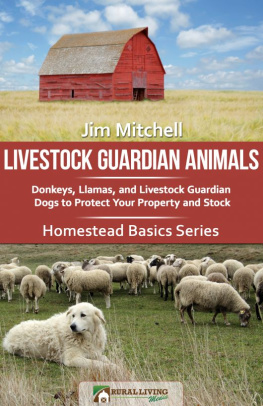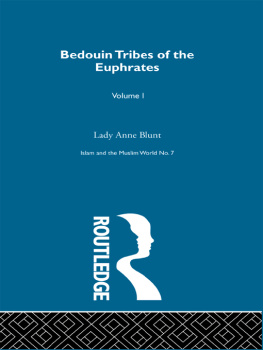The Negev Bedouin and Livestock Rearing
Mediterranea Series
G ENERAL E DITOR : Jackie Waldren, Lecturer at Oxford Brookes University; Research Associate CCCRW, Queen Elizabeth House, Oxford; and Field Co-ordinator, Deya Archaeological Museum and Research Centre, Spain
This is a new series which will feature ethnographic monographs and collect-ed works on theoretical approaches to aspects of life and culture in the areas bordering the Mediterranean. Rather than presenting a unified concept of the Mediterranean, the aim of the series is to reveal the background and dif-ferences in the cultural constructions of social space and its part in patterning social relations among the peoples of this fascinating geographical area.
First published in 1994 by Berg Publisher
Published 2020 by Routledge
2 Park Square, Milton Park, Abingdon, Oxon
OX14 4RN 605 Third Avenue, New York, NY 10017
Routledge is an imprint of the Taylor & Francis Group, an informa business
1994 Aref Abu-Rabia
All rights reserved. No part of this book may be reprinted or reproduced or utilised in any form or by any electronic, mechanical, or other means, now known or hereafter invented, including photocopying and recording, or in any information storage or retrieval system, without permission in writing from the publishers.
Notice:
Product or corporate names may be trademarks or registered trademarks, and are used only for identification and explanation without intent to infringe.
ISBN 13: 978-0-8549-6319-5 (hbk)
Contents
one
The Locality
two
Nomadism and Pastoralism
three
Pastoralism in a Permanent Location
four
The Family
five
Economics

Bedouin Tribal Areas and Spatial Distribution of Spontaneous and Planned Settlements (after Amiran et al., 1979 and Stern et al., 1987).

Tribal and International Boundaries before WWI and the Settlement System before 1948 in the Negev.

Bedouin horse race. (Photo by D. Bamea)

A Bedouin shepherdess with her flock. (Photo by D. Bamea)

Bedouin migrating. (Photo by D. Bamea)

A Bedouin playing the rababa. (Photo by . Ben-David)

The author examining a buck. (Photo by N. Marcus)

The Bedouin market, Beersheba. (Photo by the author)

A Bedouin school. (Photo by the author)

Bedouin leaders and Sheikhs greeting guests. (Photo by D. Bamea)

Bedouin roasting coffee beans. (Photo by J. Ben-David)

The author, as a young shepherd. (Photo by N. Sadan)
This monograph examines the social, economic and political significance of livestock rearing in the lives of the Negev Bedouin.
The research provides an addition to previous studies of Bedouin society. It stresses two areas; the importance and significance of livestock rearing in Bedouin life today, and the effects on livestock rearing of the process of urbanisation among the Bedouin.
The aim is to analyse the complex problems involved in livestock rearing today, the effects on it of external coercion on the part of the government, and the impact of changes in livestock rearing on Bedouin family life and society.
Livestock rearing is developing in a new direction, altogether different from the traditional one. In the past it was a source of subsistence and provided the main means of existence for most Bedouin, whereas today, while it is as important as ever for many families, for others it only furnishes a subsidiary source of extra income.
About forty years ago, the Bedouin were nomads roaming in search of pastures; this created an inevitable dependence on their natural environment. With the opening up of external occupations, this dependence on the environment has been reduced. Other factors - mainly ecological, political and economic have affected the patterns of nomadism among the Bedouin. These factors do not have a uniform effect on the livestock-folds; great variations are found in the individual holdings. The differences affect the movements of the flocks, even though they are found in the same area and under the same political and economic conditions. The variations are caused by the structure of the family, the size of the flock, and its importance in the household economy.
Despite the attraction of other work, and all the problems that are encountered, such as expropriation by the authorities of pasture-lands and the demolition of unauthorised dwellings so as to compel the Bedouin to move into permanent settlements, livestock rearing is still worthwhile and profitable for almost all Bedouin households. For many Bedouin it provides a source of remunerative labour, even though some Bedouin find alternative work elsewhere. Nevertheless, the interaction between the Bedouin and Israeli society and their integration into the economy as hired employees have diminished the importance of livestock rearing. It has become an occupation for the few owners of large flocks, or for people who are afraid of losing their subsistence security. The household is the focus for an examination of which people are engaged in livestock rearing. Most economic activities among the Bedouin today are conducted by the nuclear family or the extended family, although there are also households which own joint property.

















